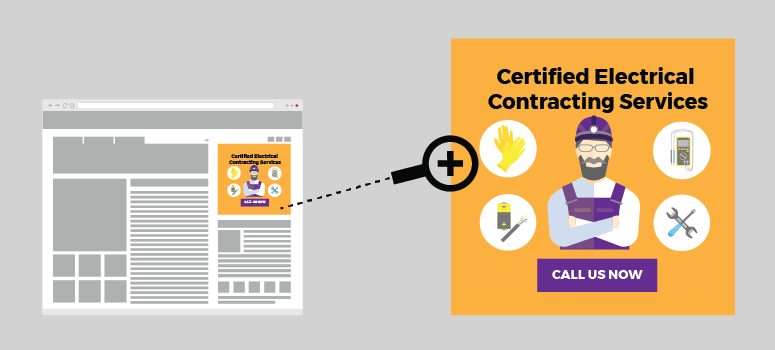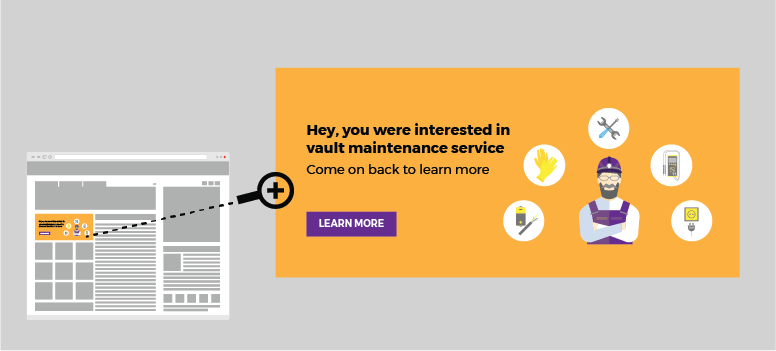- OUR APPROACH
-
COMMITTED TO YOUR SUCCESS
Our approach, developed over decades of experience, is fine-tuned to get the results you want.
We deliver concept-to-completion solutions, designed by temporary power specialists with access to the largest inventory of high-quality power generation and distribution equipment in North America.
-
- Equipment
-
RENTALS
From a wide range of diesel and natural gas generators to transformers, cable, light towers and more, our large rental fleet and extensive vendor network ensure we’ll have the temporary power equipment that your project requires — every time.

-
- Industries
-
INDUSTRIES WE SERVE
For nearly 20 years, we have been at work powering projects across Canada’s industrial sectors.
Select from this sampling of industries to learn how we can put our expertise to work for you.
VIEW ALL- Projects
- About
-
A PROUD HISTORY. A BRIGHT FUTURE.
From our inception in 1998, we have been building our team on a foundation of excellence. Our team members’ passion, expertise and commitment are what have allowed us to grow into a national company with projects across Canada.
Click on the links to learn more about our history, our team or our career opportunities.
- Blog
- Contact
-
Digital Advertising Strategies For Electrical Contractors and Other Industry Professionals
Mar 23, 2020
When it comes to building a business, doing good work is foundational — but it is not the only piece of the puzzle.
For Electrical Contractors and other industry segments that are focused on business growth, digital advertising can play a key role in attracting new clients and staying on the radar of existing ones.
But where to start?
Digital advertising encompasses a broad spectrum of strategies and tactics, from email newsletters to SEO to social media, all of which come with their own pros, cons and best practices.
Under the banner of digital advertising, display advertising is one tactic that many companies, large and small, have used to find new business. You may not have heard the term before, but anyone who has seen a banner ad while browsing the Internet has experience with this technique.

To learn more about display advertising in industrial sectors, we spoke with Kuldip Gill, the Director of Sales at Native Touch, a Canadian mobile ad tech company whose clients include major brands and publishers. In addition to his role at Native Touch, Gill sits on the council for the Interactive Advertising Bureau – a global organization that promotes digital advertising and marketing research, helps set and understand privacy regulations and ad standards and provides education and certification courses for industry professionals.
Not only is Gill a 17 year veteran of the digital advertising industry, he also has a background in the trades, including residential construction, mining and electrical work, so he understands the unique challenges and opportunities that digital advertising presents the industrial sector.
Why Display Marketing?
“Display marketing allows you to reach potential customers at every point in your sales funnel,” explains Gill. “High-level display marketing campaigns that have a broader reach can increase your brand awareness, and as you apply more data (e.g. web-browsing behavior) to your campaigns, you can target consumers who are lower in your funnel and ready to reach out for a service quote.”
Display advertising increases your brand awareness by putting your company’s name and message in front of potential customers over and over again — a situation where familiarity generates credibility. For any company looking to increase sales, brand awareness is crucial.
Gill recounts an incident that highlights the importance of brand awareness for a company’s sales. “When I worked for the AutoTrader, I would see a quarter page print ad run each week for 5 years for a company that built engines,” he recalls. “I never engaged with the ad until one day I was driving down the freeway and I blew the motor on my SUV.” Although other companies offered less expensive service, Gill went with the company he was familiar with. “In my eyes, they were a more legitimate company, because they had built their brand awareness with me.”
While building brand awareness is essential, many business owners want to know whether an ad they are paying for will directly increase their business — something display advertising can also do.
When a consumer clicks on an ad, they are taken to a landing page on the company’s website, where the company has an opportunity to convince that consumer to become a customer. The key is to ensure that the information in the ad is relevant to the landing page. “Send this traffic to the page most likely to result in a conversion,” says Gill. “That could be a form submission, a white paper download, a free consultation, or something else, depending on what you are advertising.”
Finding Your Audience
Before you can implement an effective display advertising campaign, you have to determine who your current and potential customers are – your target audience.
“You really need to know who your customers are,” asserts Gill, “and that can be more challenging than you think. Org charts in companies change all the time, departmental decision makers change. The demographics of your audience change.”
So how can a company find out who their audience is? First, look at the data. Website data and sales data such as sales leads, inactive and active customers — these all offer clues about who might be interested in that company’s services.
“The key is to analyze your web traffic,” explains Gill. “Look at where most of your visitors are coming from — does that align with where most of your sales are coming from? If not, why not?” Analytics tracking is a tool that shows what someone does on your website once they have clicked on your ad — whether they made a purchase, which other pages on your website they visited, and other important metrics. This can be set up relatively simply, and will answer many questions about web traffic.
Once you’ve analyzed your data, testing advertising campaigns with different data segments that seem promising will yield a great deal of useful information. Data segments might include industry, geography, age or gender. “Nobody knows everything,” says Gill. “It’s all about testing, learning, applying and repeating. And that’s the key to good marketing.”
Effective Strategies for Quick Wins
Display advertising is a big world, and with so many options, it can be difficult to know where to start. Which strategies can a company in an industrial sector implement that will generate the greatest return on investment? Gill has a few ideas.
“It might not be the easiest thing, but video is a great return on investment,” says Gill. “Consumers take in a tremendous amount of video online and that increases year over year.”
Examples of videos that a company might post on their website include equipment maintenance tutorials, case studies and explainer pieces that speak to a unique attribute of a product or service.
While they might be costly to produce up-front, Gill explains that videos are worth the investment because they can be reused for different purposes. “It’s easy to convert that video into an engaging display ad that people see on their phone or on a desktop,” he says. “That can be used to inform, build brand presence and ask the viewer to take action.
Another easy tactic to implement right away is retargeting campaigns. Retargeting ensures that your company is top of mind when a potential client is doing their research and deciding where to take their business. For example, if a consumer visits your vault maintenance services page, and then leaves the site, you can target the same visitor later on — the following week or month, or even that same day — with an ad highlighting your vault maintenance services.

“A potential client may be drawn to your advertisement, but for one reason or another they don’t click. They might be at work, or they have to take a call. Distractions happen all the time,” says Gill. “Our research shows that consumers tend to be in research mode online when they get home between 6pm and 10pm. So that’s when you can retarget them.”
Doing your own research will help to pinpoint the best times to set retargeting ads for your niche.
Another area to focus on is on building a mobile strategy.
“The average person uses their mobile device up to 4 hours a day and interacts with their mobile device 2617 times a day,” explains Gill. “Sixty-five percent of digital media is consumed on mobile devices today. Your audience is mobile and you need to be there as well.”
Focusing on mobile not only allows companies to be where their audiences are, it also offers opportunities to pinpoint exactly who sees their ads.
Geo-fencing is one of those opportunities. “Using geo-fencing, you can limit your ads to people who are in certain locations, such as new construction sites or new developments,” explains Gill. “Then you can schedule those ads so they’re only served during hours of operation for those companies, so you can ensure you’re not wasting any ad impressions.” It is even possible to change the message that your ad displays based on weather data. For example, if you are running a “Call Before You Dig” campaign, you can set it to display only when the temperature is above six degrees — when people are more likely to be digging.
Another mobile strategy is to target people who have trades-related apps on their phone — for example, measurement or invoicing apps. “You can then combine the two tactics and target people that have certain apps and that are seen at certain locations,” says gill, “to build a mobile persona around that person. We’re doing all this targeting without collecting personal identifying information about that person.”
Special Considerations for The Industrial Sectors
When it comes to display advertising in industrial sectors, the main thing to consider, according to Gill, is scale. “Scale will always be an issue because it’s such a niche audience,” he explains.
A niche audience is a smaller audience, and Gill cautions against overly expanding the criteria you’re using to target your ads. “You have to be careful when building or defining your targeting criteria,” he says. “You don’t want to get too broad in your scope in an attempt to scale more quickly — it will lead to unqualified traffic.”
Ultimately, for companies whose target audience is small and specialized, patience is key when it comes to display advertising campaigns. “You’re going to probably have to run longer campaigns.”
Hiring External Help
Display advertising takes knowledge, planning and skill and not every electrical contractor or business owner has the time to dedicate to carrying off a successful campaign. For companies looking to hire help, Gill explains that there are several options: hiring an agency or a freelancer, hiring a marketing professional as an employee, or training up an existing employee. Each option comes with pros and cons.
“The pro of promoting internally is that it’s someone who knows your business very very well,” says Gill. “And it’s always great for morale to see someone move up and get trained within the organization.
However, digital advertising has a steep learning curve. And because change happens quickly and often, it can take a long time — sometimes years — for someone new to the industry to catch up.
Hiring an agency eliminates the training period. It also means you have experts in the field who will take care of everything. Says Gill, “They manage all creative aspects as well as the technical facets, so that’s completely offloaded.” The con? Cost. Agencies can be pricey and often require a minimum spend.
A less costly contracting option is to hire a freelance digital marketer. While this is potentially the cheapest of all the options, you will run into a similar issue with freelancers as you might with an agency. Namely, that they typically have multiple clients in multiple industries, so they might not understand your clients as well as an employee who is focused only on your business.
Hiring a marketer can also be expensive. “You pay for good talent,”says Gill. “And there aren’t a lot of marketers out there at a senior level or at an enterprise level who really understand all the concepts that your organization might need in a digital marketing world.”
On the other hand, hiring a marketer as an employee means that you have someone on your team who understands the technology and how to keep up with changing consumer behaviours, and who has contacts and connections to agencies and vendors in the digital marketing world.
Whether hiring a marketing employee or an agency, companies should look to hire someone who’s done their research. “A lot of marketers will just do a higher level assessment and then come up with tactics that they just use generally for all their clients,” says Gill. “ But if you can find someone who’s actually done research on who you are, who your clients are and who your competition is, that’s someone I would be looking to hire.”
Related Articles
Subscribe for access to exclusive content
"*" indicates required fields




















